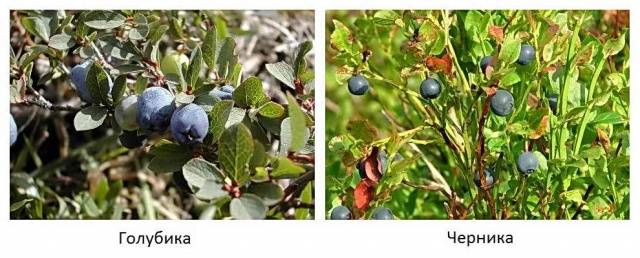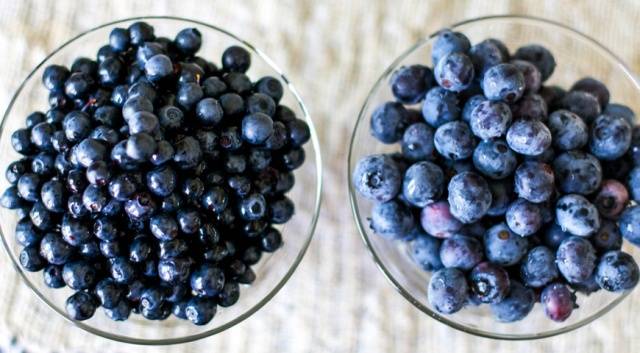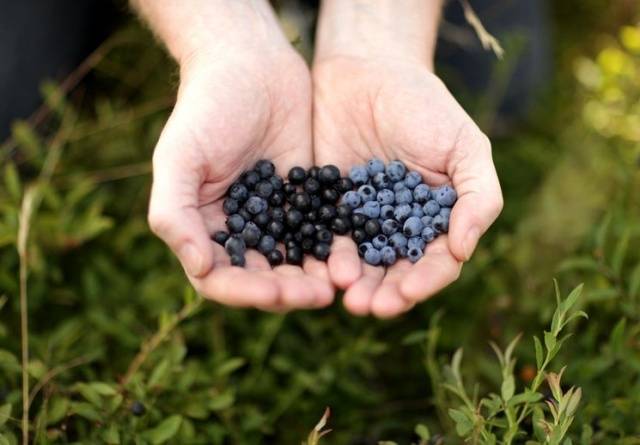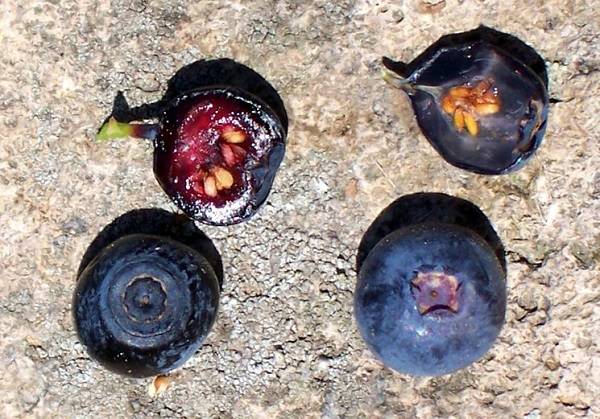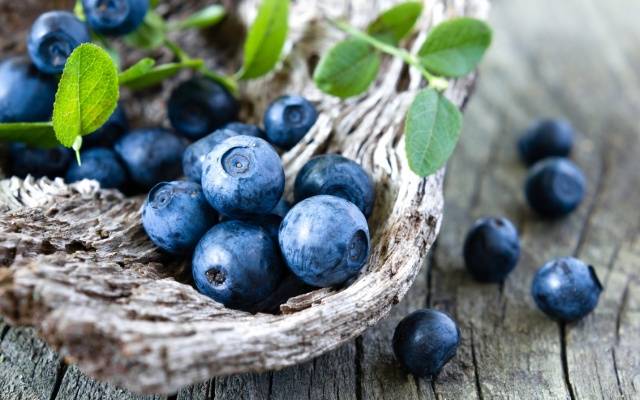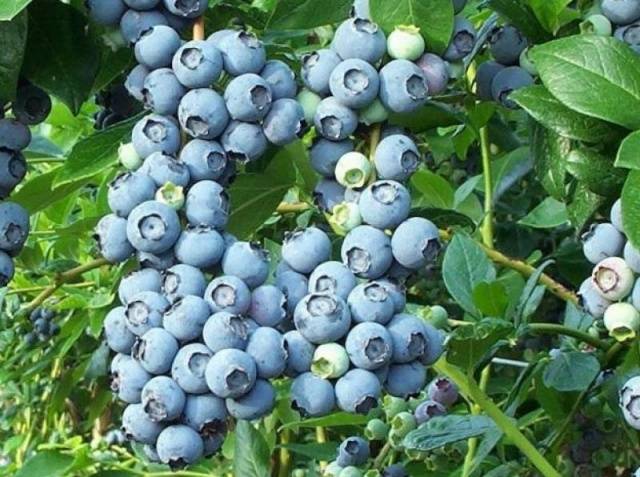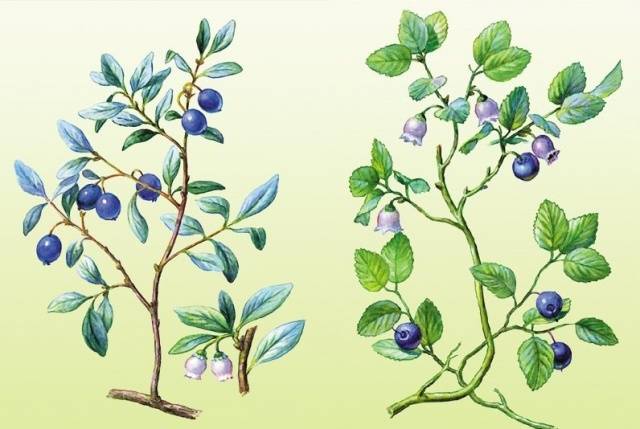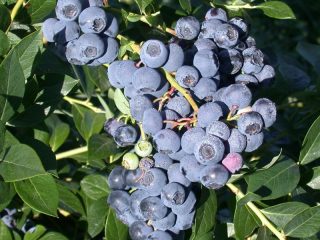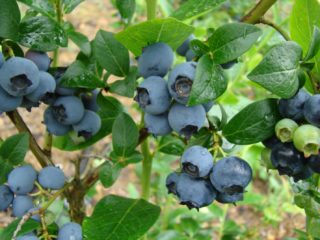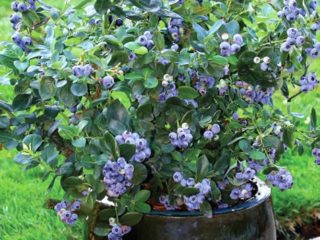Content
- 1 Blueberries and blueberries: a comparison of berries
- 2 What is the difference between blueberries and blueberries
- 3 Difference between blueberries and blueberries
- 4 Comparison of the beneficial properties of blueberries and blueberries
- 5 The difference in growing berries
- 6 Differences in storage, processing and transportation of berries
- 7 Conclusion
Blueberries and blueberries are very popular for their medicinal properties. Both are similar, useful, but there is a difference in their qualities.
Blueberries and blueberries: a comparison of berries
Wild blueberry and blueberry fruits are a real find. The shops sell garden varieties, bred mainly by breeders from Canada. They are similar in composition and quality to wild plants and bring the same benefits. Common blueberry (Vaccinium myrtillus) practically does not grow in gardens. The seedlings that are offered in the markets and in online stores are a completely different type of plant, the result of the American selection of the tall blueberry (Vaccinium cyanococcus). Their properties resemble forest fruits.
You can tell the difference between blueberries and blueberries by comparing the fruits. Smaller blueberries, weight up to 1 g. It is characterized by dark coloring substances - anthocyanins, an intense special attractive flavor with sweet-sour notes. Blueberry fruits are recognized by their light green dense, fleshy pulp and colorless, watery juice. They are sour, with a neutral, mild taste, but there are also sweet, slightly cloying ones.
You can clearly see in the photo how blueberries differ from blueberries.
What is the difference between blueberries and blueberries
In nature, both plants prefer cold and temperate climates, and are found in forests and wetlands. Blueberries are low, up to 40 cm, with green, flexible shoots, on which lonely berries are visible. Grows in coniferous, more often pine forests. Blueberry bushes are higher, 0.5 m, sometimes they rise up to 1 m, lignified shoots, berries are collected in bunches. They grow in open areas, and are also found in the Caucasus. The leaves are ovoid, similar, since both shrubs belong to the same family - Heather.
At first glance, blueberries and blueberries are difficult to distinguish for a beginner. But each has its own characteristics even in appearance - the skin of one and the other is covered with a bluish bloom, the difference is visible in color. Blueberry fruits are round, dark blue, almost black ball. Blueberries are gray-blue, large, up to 12 mm, weighing 1 g, slightly elongated.
Photo: blueberries and blueberries differ in skin color.
Difference between blueberries and blueberries
It is interesting to compare blueberries and blueberries in terms of the composition and amount of vitamins.
Substances per 100 g of product | Blueberry | Blueberry |
Calories | 57 kcal | 39 kcal |
Protein | 0.74 g | 1 g |
Fats | 0.33 g | 0.5 g |
Carbohydrates | 14.49 g | 8.2 g |
Cellulose | 2.4 g | 1.2 g |
Water | 87 g | 88.2 g |
Ash | 0.4 g | 0.3 g |
Vitamin A | 54 IU | 0.29 mg |
Vitamin B1 | 0.037 mg | 0.02 mg |
Vitamin C | 9.7 mg | 16-20 mg |
Vitamin PP | 0.418 mg | 0.28 mg |
Vitamin K | 19.3 mcg | 19.3 mcg |
The difference in the content of biologically active substances is rather insignificant. Shrub fruits are rich in vitamins, minerals, amino acids, fiber, pectins. In terms of the content of vitamins of different groups - C, PP, B, A, K, berries are approximately equal, although there is some difference in favor of the composition of blueberry fruits.
The difference between blueberries and blueberries, as the photo shows, is in the color of the pulp.
The healing properties of blueberries and blueberries depend not only on the availability of vitamins, but also on other components. Blueberry fruits are rich in acids - ascorbic, malic, nicotinic, acetic, oxalic. They contain a little iron - 0.8 mg, but in a form that is completely absorbed by the body. Blueberries are known for their unique high manganese content - 0.336 mg, this is their difference from other wild and cultivated plants. This element is indispensable in carbohydrate metabolic processes.
Comparison of the beneficial properties of blueberries and blueberries
Berries are good for health, and you should use the period of their collection to strengthen the body. Blueberries differ from blueberries in their properties and effects, although both types of fruits give an extremely positive general strengthening effect.
The benefits of blueberries
Due to its qualities, blueberry fruits and products from them are popular. They are used:
- to strengthen the cardiovascular system, including with hypertension;
- to improve the functioning of the intestines and pancreas;
- to stimulate metabolism and reduce blood sugar levels;
- to normalize brain activity in the field of improving memory and concentration;
- to relieve eye fatigue during strenuous work at the computer;
- as an anti-inflammatory and anti-dysentery agent;
- in case of anemia and to improve immunity.
Pectins and anthocyanins promote the elimination of toxins, maintain neural connections, therefore, the berries are recommended to their patients by nutritionists, oncologists and gerontologists.
However, you shouldn't eat blueberry fruits alone, as they can cause allergies, intestinal upset and muscle dysfunction.
The benefits of blueberries
A characteristic feature of the composition of blueberry fruits is a large amount of ascorbic acid and antioxidants. Many consider these berries to be a panacea for diseases and eye fatigue, to support the retina. Moreover, they produce pharmaceuticals based on them.
It has been established that blueberry fruits are shown:
- with a decrease in visual acuity;
- with the threat of the development of cardiovascular diseases and atherosclerosis in particular;
- during an upset gastrointestinal tract;
- to cleanse the body of toxins, with anemia and low immunity;
- as prevention of oncological diseases;
- with high blood sugar;
- in case of infectious or colds.
Berries are used as an antibiotic for the treatment of burns or abscesses on the skin, in folk medicine they are used for urolithiasis.
There are also contraindications: chronic constipation and diseases of the pancreas and duodenum.
Which berry is healthier: blueberries or blueberries
There is a general consensus that blueberries are healthier than blueberries. There is a slight difference between their properties. And at the same time, vitamin fruits saturate the body with useful substances and enhance its protective functions:
- to maintain healthy eyes, blueberry fruits are better, although blueberries will also contribute to strengthening vision;
- the latter are irreplaceable for the elderly with their properties to improve memory and thinking processes, as well as to normalize bowel function.
The difference in growing berries
The difference between blueberries and blueberries is the ability to take root in gardens. Eurasian blueberry plants require special conditions that are almost impossible to fulfill. Garden shrubs derived from plants from North America. Both types should be planted in open areas or in light partial shade, on sour soils and take care of drainage in the holes.
Features of growing blueberries
When buying seedlings in spring, they choose early and medium varieties, because late-ripening ones in our conditions may not ripen. Low-growing bushes are suitable for the northern regions. Pay attention to the taste of the variety.
Care instructions:
- when planting, you cannot add ash and manure, fertilize with minerals;
- watered in the phase of flowering and the formation of ovaries;
- the trunk circle is mulched with peat, oak leaves, needles.
How blueberries are grown
Blueberry seedlings are chosen based on the height of the bushes, the size and sugar content of the berries, and the ripening time. When growing, adhere to these tips:
- the distance between the holes is up to 1.5 m;
- regular watering is the key to good development of the shrub;
- are fed with minerals, without organic matter.
Comparison of the yield and harvest time of blueberries and blueberries
Garden shrubs are fruitful, yield up to 7 kg per plant. Fruits are harvested from late June to early autumn, plucked every week.
Blueberry fruits, depending on the variety, ripen from late July to mid-autumn. Ripe, weighing 10-25 g, acquire a gray-blue tint. But you don't need to rip them off right away. They wait another 5-10 days for the fruits to pick up sugar and soften, removed with a dry separation. The first harvest is consumed fresh, and the late harvest is allowed for processing.
Differences in storage, processing and transportation of berries
Fresh blueberry fruits last a month and a half at temperatures close to zero. Blueberries are kept in such conditions for 15 days. Fruits are transported in small boxes, folded in three to four layers. Both types of berries are frozen or dried, used for different preparations and fillings.
Conclusion
Blueberries and blueberries are valuable for health, there is very little difference between their properties. Garden crops, unlike wild plants, have similar healing qualities. Adhering to the advice on growing shrubs, they get vitamin berries for their own use.
